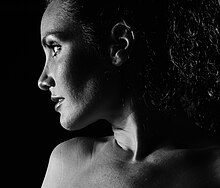Title Sequences
A title sequence is a method by which films and or television programs present their title, key production and cast members, using visual and sound. A title sequence also must contain an ident. An ident is designed to identify a particular studio. It is very similar to their logo. It needs to be memorable and easy for the audience to recognise. Film and televison studios often having moving idents. An example can be 20th Century Fox with their moving ident. An ident always appear at the start of a film, before the opening film.
The most famous moving idents are from the six major companies. The are named as the"big six". They command approximately 90% of the box office takings.
These are: 20th Century Fox, Universal Studios, Columbia Pictures, Paramount Pictures, Warner Bros and Walt Disney.
Indies
The indies is the studios that work outside the major studio systems are known as "independents" or "indies". Examples include: Film4 Productions and BBC and Warp.
The history of the BBC's ident and how it has evolved over time. This is a great example of how a studio will change it's ident in order to accommodate it's audience and improve upon previous ones to make them more appropriate as times progress. The BBC was founded in 1922 with the intention of informing, educating and entertaining viewers and still does so today.




.jpg)




